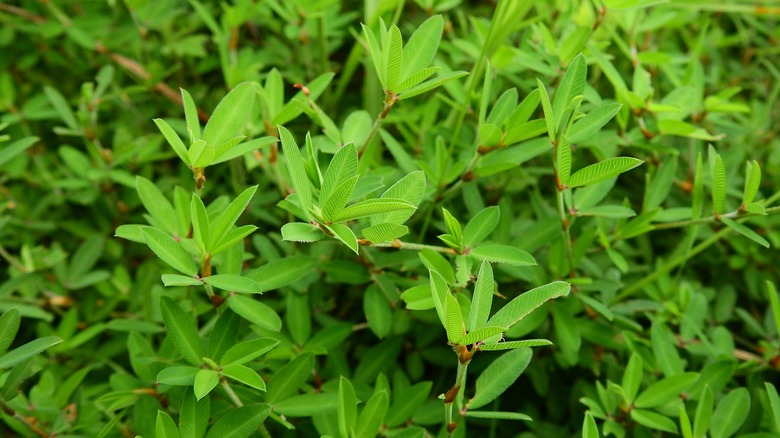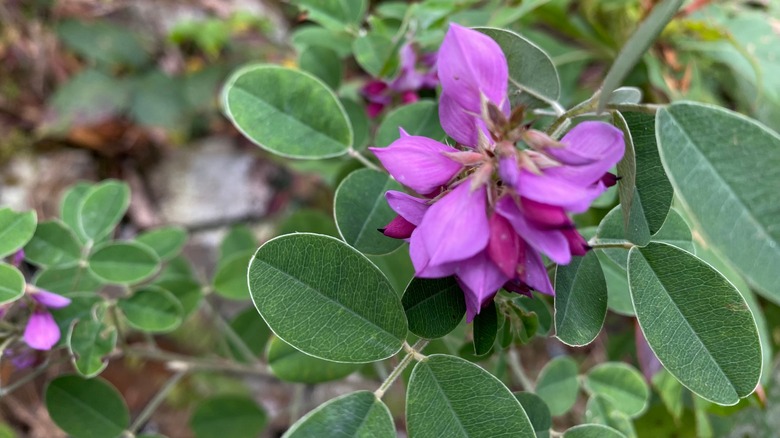How To Get Rid Of Lespedeza Weed That's Taken Over Your Garden Beds
Common lespedeza (Kummerowia striata), which also goes by the name Japanese clover, might look innocent with its small, clover-like leaves and tiny pink or purple flowers, but for many gardeners, it can become a huge nuisance. This aggressive annual weed thrives in sunny areas with poor soil conditions, meaning that it often takes over garden beds where other plants struggle. Its ability to adapt to various environments, including drought, makes it hard to deal with. You'll recognize it by its trifoliate leaves and wiry stems, which can both spread low to the ground or form a bushy mound.
If you've spotted lespedeza invading your flower beds, it's essential to take action quickly. The longer you let it thrive, the harder it becomes to remove. One of the best ways to manage lespedeza is through manual removal. Weeding your garden in the morning or when the soil is moist, pulling the weed by the roots can be effective, but getting the entire root system is crucial. Leaving any part behind will result in regrowth. A garden fork can help loosen the soil, making it easier to pull the plant out.
However, if your garden bed is overrun with lespedeza, hand-pulling might not be enough. In these cases, using an herbicide may be necessary. If you go this route, make sure to protect your ornamental plants by covering them with pieces of cardboard or plastic while you spray. Choose a post-emergent herbicide designed for broadleaf weeds since lespedeza falls into this category. Repeat applications may be necessary.
Long-term control methods for lespedeza
Once you've tackled the initial removal of lespedeza, you'll want to implement long-term control methods to eliminate it for good. One of the simplest ways to discourage the weeds from re-establishing in your garden beds is to use mulch. Applying a 2 to 3-inch layer of organic mulch will not only suppress lespedeza seeds but also improve soil quality for your desired plants. Mulch acts as a barrier, blocking sunlight from reaching weed seeds and making it harder for them to germinate.
In addition to mulching, regular maintenance of your garden bed is important. Keep an eye out for any new growth of lespedeza and remove it before it has a chance to spread. If the weed shows back up, it's often easier to manage it early on before it gets a foothold. Improving the soil's fertility can also help prevent lespedeza. Since the weed tends to thrive in poor soils, enriching your garden beds with compost or organic matter will give your plants the upper hand.
Healthy plants grow more vigorously, preventing potential invaders like lespedeza. Regular watering and fertilizing your garden at the right time will also help your favored plants thrive, reducing the chances of weeds taking over. You can also add groundcover plants that prevent pesky weeds. With persistence and the right approach, you can reclaim your garden beds from the grip of lespedeza. Whether you choose manual removal or targeted herbicides, consistency is key in keeping your garden healthy to prevent future infestations.

